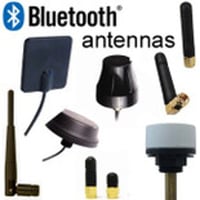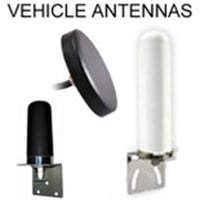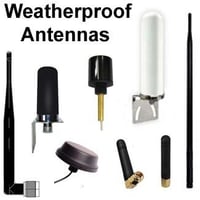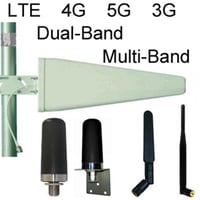Antennas with RP-SMA connector
RP-SMA Antennas
Most typically used in these wireless protocols and technologies:
- Wi-Fi (802.11a/b/g/n/ac): RP-SMA is a staple in Wi-Fi applications.
- Bluetooth: Often used for short-range communications.
- BLE: Bluetooth Low Energy: An IoT wireless protocol.
- Zigbee: Commonly utilized in smart home setups.
- RFID: For identification and tracking purposes.
- Thread IoT wireless protocol
Antennas with RP-SMA connectors are also seen on LTE 4G and GSM 3G, devices, although SMA connectors are far more commonly used with the cellular protocols. Standard SMA connectors were used on WiFi devices for decades, with the problem that non-compatible SMA antennas and coaxial antenna cables were common on the market. The FCC mandated that WIFi devices feature a different connector assembly, one not compatible with off-brand antennas and coax cables. The RP-SMA antenna was developed to address this mandate by simply reversing which gender has the pin, and which gender has the receptacle.
Data Alliance provides weatherproof / waterproof RP SMA antennas suitable for long-term outdoor waterproofing use.
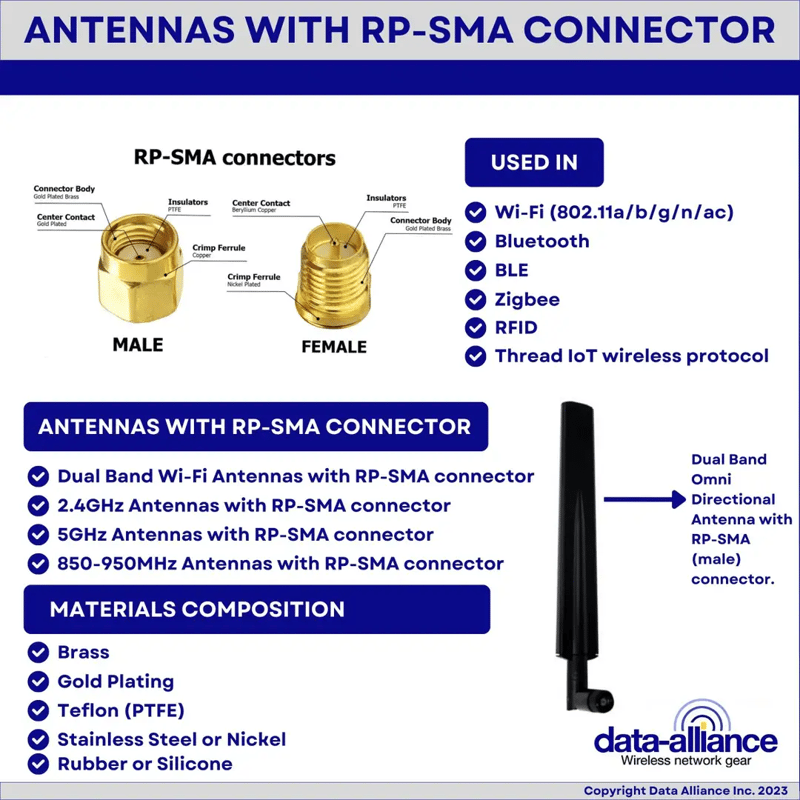
From the late 1990s until 2010, RP-SMA was more popular connector than SMA, and it remains the primary option for Wi-Fi and Bluetooth applications. There are as many RP SMA antenna options than SMA antenna options.
Almost all RP-SMA antennas have the male version of the connector. An RP-SMA male antenna can be attached directly to the wireless device, or extended via a coax RP-SMA cable. The connection is rated for up to 500 uses, assuming manufacturer-recommended torque.
The male connector features a 7.67mm hex barrel with interior threading at 36 threads per inch, just like standard SMA. However, the male connector features the receptacle, not the pin. The female connector has exterior threading but features the pin instead of the receptacle. Housings can be constructed from brass or stainless steel, with nickel or gold plating on the connection points and polytetrafluoroethylene (PTFE) dielectric insulation.
Like the SMA, RP-SMA WiFi antenna connectors pull DC from 0GHm to 18GHz at 50 Ohms impedance.
Applications
- Wireless routers and access points
- Remote-controlled devices
- Wireless security cameras
- IoT devices: These often have a U.FL, MHF4 or MMCX jack, in which case, an RP-SMA antenna would connect using an RP-SMA to U.FL cable, RP-SMA to MHF4 cable, or RP-SMA to MMCX cable.
- Smart home IoT devices
Torque Rating of RP-SMA-male Antenna Connectors
Torque is essential for optimal performance and longevity. A standard torque rating for RP-SMA connectors is around 3-5 in-lbs. It ensures a secure connection without risking damage to the antenna or its respective device.
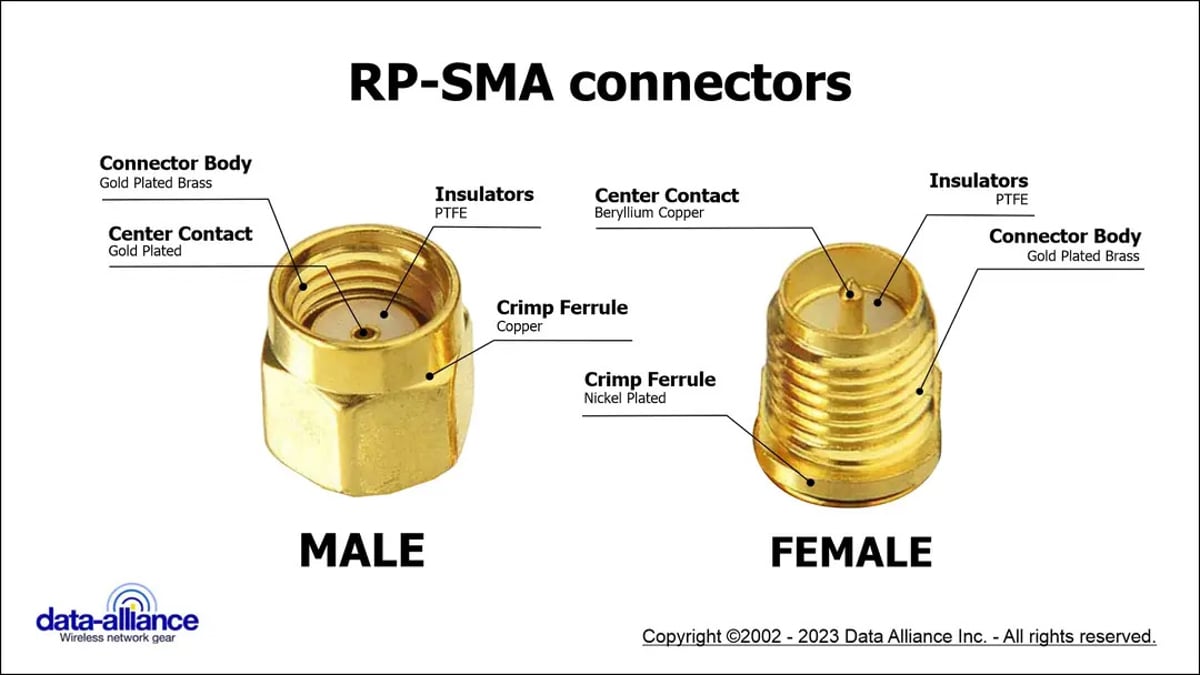
Materials Composition of RP-SMA-male Connectors
-
Brass: The bulk of the connector, especially the body, is most often made of brass (sometimes nickel). Brass is chosen for its malleability, which makes it easy to shape, and its excellent electrical conductivity, ensuring efficient signal transmission.
-
Gold Plating: The actual contact surfaces of many RP-SMA male connectors are often gold-plated. Gold is a highly effective conductor and is resistant to corrosion. The gold plating ensures a consistent and high-quality connection over time, even with frequent mating and de-mating. This results in minimal signal loss.
-
Teflon (PTFE): Inside the connector, Teflon might be used as an insulator. It effectively separates the central conductor from the outer shielding, preventing any short-circuits or interference. Teflon is chosen for its high resistance to heat and its excellent insulating properties.
-
Stainless Steel or Nickel: Some designs might use stainless steel or nickel for certain components, especially for the threading or other parts of the connector that might experience wear and tear. Both materials are durable and resistant to corrosion.
-
Rubber or Silicone: For connectors that come with a sealing gasket or O-ring, materials like rubber or silicone might be used. These help ensure a snug fit and prevent moisture or debris from getting inside the connection.


